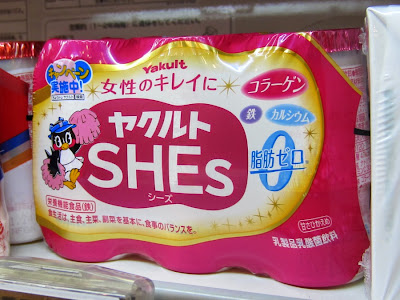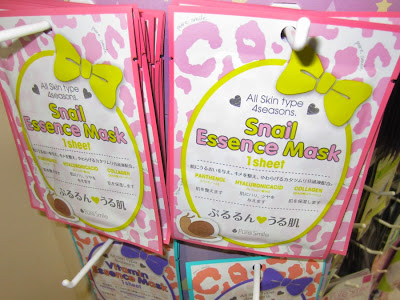Lost in Translation, Part 6: Kyoto (Part 2)
Continuing with our Kyoto adventures...
Much of the next day was dedicated to visiting the massive Kiyomizu-dera ("Pure Water Temple") complex, which is one of the most celebrated Buddhist temples of Japan. It was built (without any nails!) in 780 on a hillside over the Otawa Waterfall and is known for the precipitous terrace that juts out from the hillside, offering visitors a spectacular view over Kyoto.
Animals eating their young (but in a cute way).
Octopus balls are a popular Kyoto street food, but it just seems wrong for these octopuses (octopi?) be eating themselves!
Much of the next day was dedicated to visiting the massive Kiyomizu-dera ("Pure Water Temple") complex, which is one of the most celebrated Buddhist temples of Japan. It was built (without any nails!) in 780 on a hillside over the Otawa Waterfall and is known for the precipitous terrace that juts out from the hillside, offering visitors a spectacular view over Kyoto.
Away from the main temple stands the Jishu Shrine, dedicated to the deity of love and matchmaking. Here’s where you’ll find a little touch of Vega$ in Kyoto. There are two stones placed 18 meters apart, and successfully walking from one to the other with your eyes closed is a harbinger of good luck in love. Karen and I both had decent luck, and like everyone we enjoyed watching others try.
A little less touristy is the opportunity to drink from the Otowa Waterfall from a cup attached to a long pole. Doing so is said to give you a long life, although they provided no peer-reviewed references to back that up.
We hiked out to this distant vermillion pagoda:
The temple is approached by a walk (or should I say “hike”) through the Higashiyama District, a colorful and busy area that has been catering to the temple’s visitors and pilgrims for centuries.
Everywhere we went, we bumped into street gangs. Well, they were actually roving groups of Japanese students in uniform who are apparently encouraged to practice their English by hanging out where the tourists do, asking you a series of questions about your trip to Japan, and then taking a picture of you. They were very cute and it was hard not to stop and help out. And sometimes, we returned the favor.
Major display of Domo in the JR Seitan department store.
Our dinner that evening was at an izakaya. This is sort of a neighborhood hangout that serves both drinks and a variety of food at the bar. It was good times.
The next day began with a stroll along the Philosopher’s Walk. This pedestrian path follows canal on the edge of Kyoto between the temples of Nanzen-ji and Ginkaku-ji, passing many other temples and shrines along the way—along with restaurants, cafes, boutiques, and lovely views. It is especially popular in spring when the cherry trees that line it are in bloom.
These cat ladies are apparently used to the paparazzi because they were ready to hide from any cameras.
Maybe it’s just me, but this dental logo spotted along the Philosopher’s Walk made it look painful.
The Nanzenji Temple with its massive Sanmon entrance gate.
Ginkaku-ji (“Temple of the Silver Pavilion") is officially named Jishō-ji ("Temple of Shining Mercy"). It was originally built in 1482 as a retirement villa by the shogun Ashikaga Yoshimasa, who modeled it after his grandfather’s Golden Pavilion (Kinkaku-ji). This too was converted to a Zen temple after his death in 1490. This particular shogun was obsessed with art and ushered in an era known as the Higashiyama Culture, which had a broad impact across Japan. Arts that flowered under this movement include the tea ceremony, flower arrangement, noh theater, poetry, garden design, and architecture.
Despite its name, the Silver Pavilion is not (nor has it ever been) silver. Instead, it is believed that the nickname arose simply to contrast it with the Golden Pavilion, or because the moonlight reflecting off its black lacquer appeared silver. In any event, it is surrounded by an expansive sand garden (including a large sand cone said to symbolize Mount Fuji) and a moss garden filled with ponds, islands, and bridges.
The Heian Shrine is a Shinto shrine in the heart of Kyoto that holds the top rank for shrines. It’s not ancient—it dates only to 1895 when it was built to commemorate the 1100th anniversary of the founding of Kyoto as Japan’s original capital and is dedicated to the spirits of the first (Kammu, 737-806) and last (Komei, 1831-1867) emperors who reigned from the city. We arrived in time for a terrific downpour, which we waited out under the giant entrance gate. But we were very lucky because the rain disappeared quickly to reveal a huge rainbow over the shrine just as we entered.
There were little children dressed in traditional garb again…
...and, as in many shrines, these trees with prayers tied to them.
The shrine covers a great amount of area. The main buildings are a partial replica of the original Imperial Palace, but on a smaller scale (!). Behind them is an extensive and stunning garden.
Sanjūsangen-dō Hall is the popular name for the temple formally known as Rengeo-in (“Hall of the Lotus King”). This hall is Japan’s longest wooden structure and contains 1001 statues of Sahasrabhuja-arya-avalokiteśvara, more simply known as Kannon, goddess of mercy. For nearly 800 years, a massive statue of Kannon with 1000 arms has sat at the center of the hall, with 1000 smaller, identical statues standing in row upon row around her (the smaller statues only have 40 extra arms but multiplied by the “25 planes of existence” that makes 1000). There are also wild and fantastic (in the true meaning of the word) statues of 28 guardian deities. It’s certainly an impressive and humbling sight. No photos are allowed inside—and for once I actually obeyed that rule—so the interior shots below are courtesy of the World Wide Web.
With the gems of Kyoto but a recent memory, we headed to our next and final destination, Hiroshima. BUT BEFORE WE GO…A FEW PARTING SHOTS!
There are just all kinds of colorful things throughout Japanese stores. This ramen is ANGRY!
For women only?
Speaks for itself.
I’m not sure if this beverage is for people who are tired, constipated, or both.
It’s all hot…and all terrible.
Smile like a cobra?
From Hummel's little-known "Sodomize Me" figurine collection.
No comment.
Is “Napalm” really an appropriate name for a bar? In Asia?!
Doodling and sketching might be okay, but don’t even think about anything else.
Shhh!
The possible outcomes of your fortune at Sanjūsangen-dō.
More Japanese ingenuity at work!
We're not sure what this was advertising, but it was everywhere.
Etcetera and so forth...
I enjoy how you have your choice between the “Place of Scenic Beauty” and the “Special Place of Scenic Beauty”. You know, in case you’re worried that you’ll be overwhelmed by the latter.
The possible outcomes of your fortune at Sanjūsangen-dō.
More Japanese ingenuity at work!
We're not sure what this was advertising, but it was everywhere.
Etcetera and so forth...
I enjoy how you have your choice between the “Place of Scenic Beauty” and the “Special Place of Scenic Beauty”. You know, in case you’re worried that you’ll be overwhelmed by the latter.
I suppose this is a fair question in a country where beef is a premium.
On the other hand, at this restaurant you can select very specific parts of the cow from the “Innards dishes” section, such as fifth stomach and 3 different grades of thoracic diaphragm (definitely click to enlarge and see for yourself).
We never found panties in any vending machines, but this one offered corn and hot chocolate named after Milhouse.
Octopus balls are a popular Kyoto street food, but it just seems wrong for these octopuses (octopi?) be eating themselves!









































































































0 Comments:
Post a Comment
<< Home